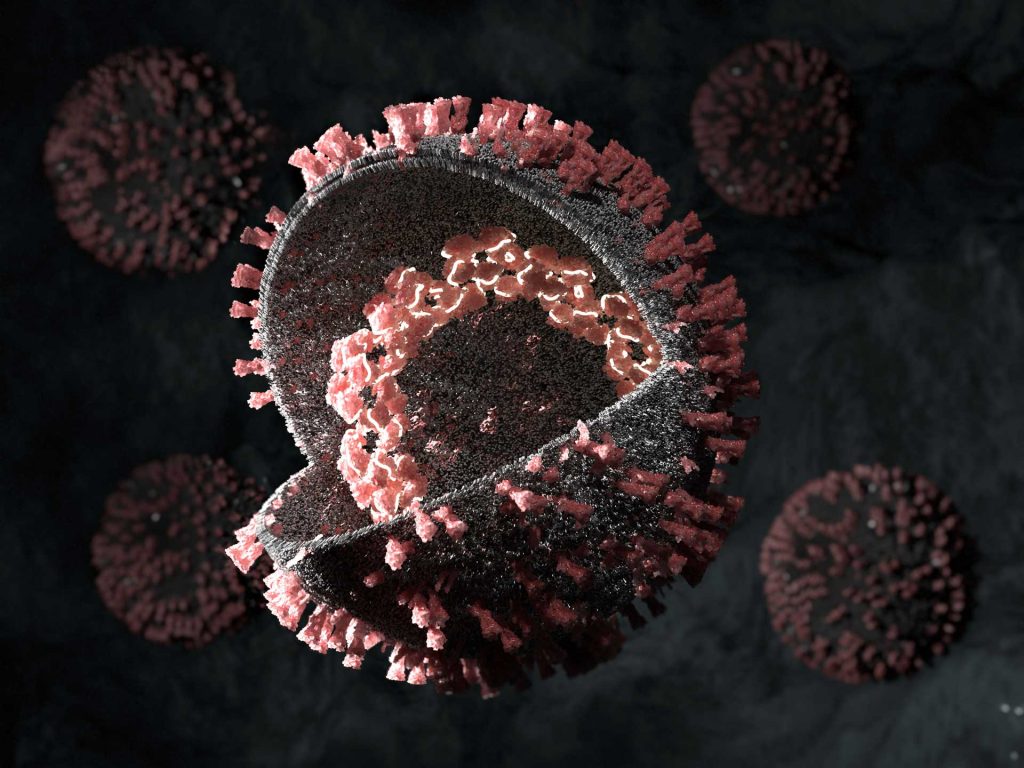Name: Thom Leach
Which came first in your life, the science or the art?
Science came first in my life. Growing up I was a jack of all trades, but I chose to study science further because I enjoyed the concepts, and it was better funded, so I saw it as a safe bet career-wise. If you’d have told me as a teenager that I would one day become an artist, I would have thought you were crazy. But as I got older, I realized more and more that I was missing forms of expression in my life. This eventually led to creative hobbies, which increasingly took over until I realized that I could no longer continue in a normal job if it wasn’t centred around creative practice.

Which sciences relate to your art practice?
My background is in biotechnology, which covers a range of areas, including microbiology, biomedical science, molecular biology and biochemistry. I’ve mainly illustrated and animated for people using these concepts, but have also illustrated for materials scientists, astrophysicists, and ecologists. I think if you have a good foundation in one area of science, it’s quite easy to learn concepts from another and apply your experience in the illustration to that.

What materials do you use to create your artworks?
My work is completely digital. I use a range of programs, which vary depending on the job. At the very basic level, I create and render illustrations and animations using Cinema 4D. If scientific accuracy is needed, I use Pymol or Chimera to work with molecular structures. Sometimes I incorporate Zbrush to sculpt or simplify custom structures, e.g. cancer cells, or a very complex protein. I also often polish works afterwards using After Effects, Premiere Pro, and Photoshop. I think each has its merits, and I do my best to gear my workflow towards the client brief each time, because every job is different.


Artwork/Exhibition you are most proud of:
I’m most proud of having my work featured as the January 2022 cover for Nature Microbiology. Nature’s journals contain some of the best science happening in the world today, and I’m so grateful to have contributed to a publication that showcases that.

Which scientists and/or artists inspire and/or have influenced you?
My PhD supervisor Alan Dickson offered huge encouragement when I wasn’t sure pure science was the correct path for me. He was a huge factor in me completing the course, and it’s opened doors for me that I wouldn’t have otherwise had in life. I’m also very inspired by the works of David Goodsell and Drew Berry, who visualize the inner workings of our cells so accurately and beautifully.

SciArt is an emerging term related to combining art and science. How would you define it?
To me, SciArt is anything that a person creates containing concepts of science. This could be very literal, for instance, a textbook illustration designed to inform an audience, or more figurative, such as a sculpture built using the shape of DNA as its foundation. So long as a piece, whether illustration, sculpture, fashion, music, etc., draws inspiration from science, I believe it can be classed as SciArt.

For more by Thom Leach, visit his website, Instagram, and LinkedIn.
*
Featured image: HIV (2019) by Thom Leach.
All images courtesy of the artist.
Share this Post
